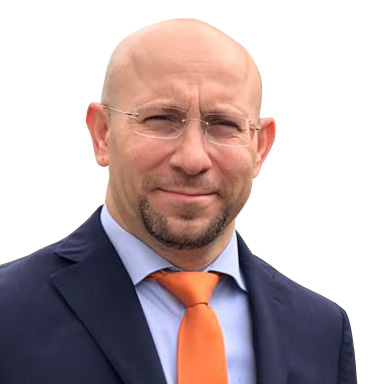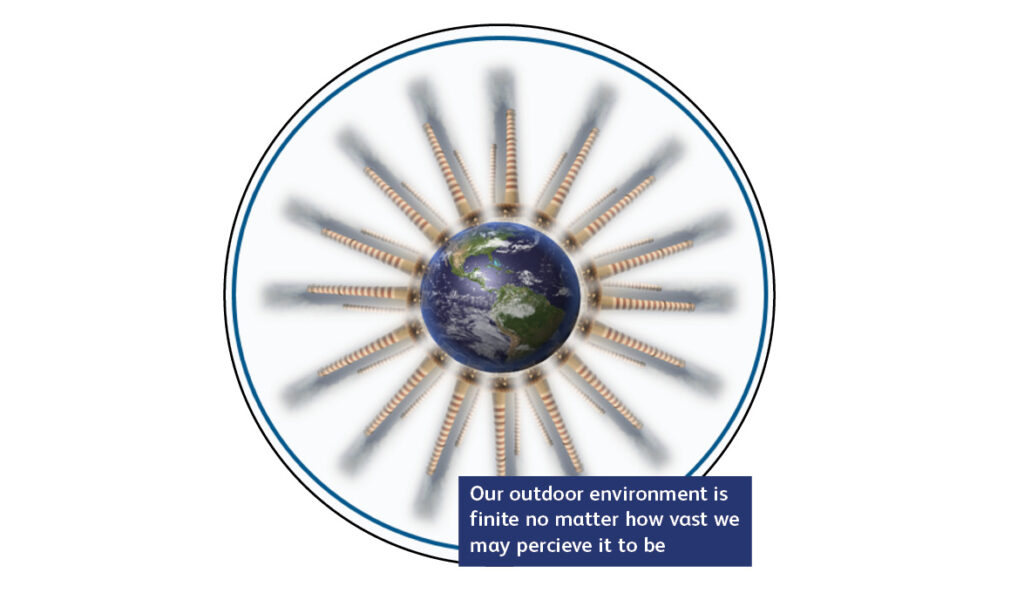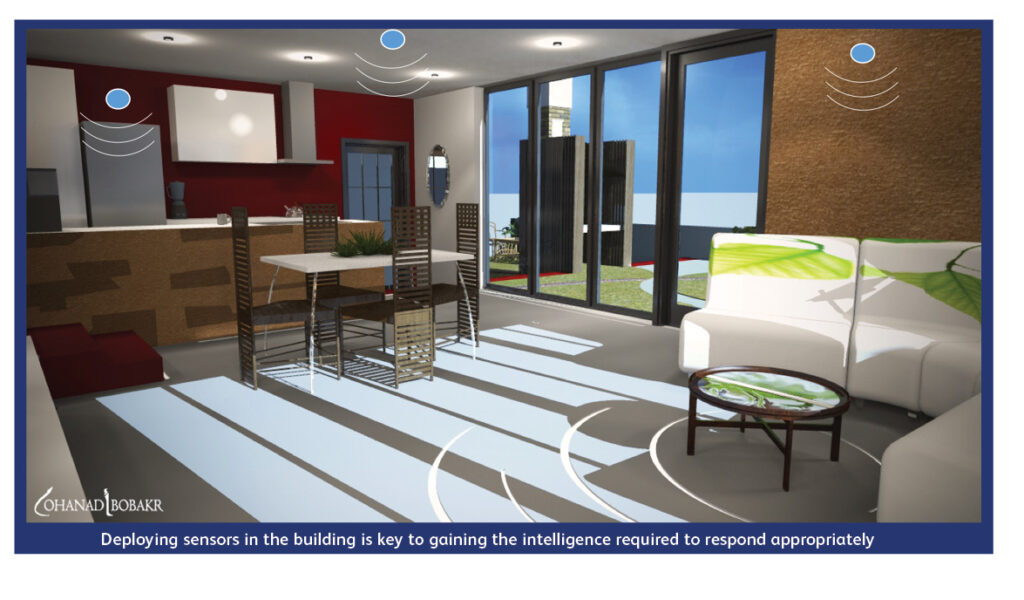Part 2 of ‘Can’t underestimate the potential of HVAC systems and air filters’
The strategy we need to embrace in combatting future pandemics revolves around monitoring the air to characterise the physical and chemical aspects of the suspended contaminants, says Dr Iyad Al-Attar in this interview with Surendar Balakrishnan

Global health is a top international priority, and healthcare facilities are under scrutiny. What kind of healthcare systems should we look for, considering what we know today?
We have all been impacted by COVID-19 in different ways, and therefore, our responses have been unique. The pandemic has revealed how healthcare systems have been overwhelmed with an influx of patients and how they have had to shift patients to outpatient facilities to undergo procedures. Certainly, such facilities were subject to optimisation by various means to conduct the required procedures. The pandemic has not only placed emphasis on the capacity of healthcare infrastructure to accommodate patients but has also highlighted the importance of health delivery in a timely manner.
Reshaping the future of healthcare is the responsibility of policymakers, providers, payers and patients. Various international organisations, such as the WHO, agree that the right to health for all people means that everyone should have access to the health services they need, when and where they need them, without suffering financial hardship. Global health is essential, and its programmes are not limited to low- or high-income countries or particular geographical regions of the world. Our hearts and minds are with those nations that have less than five doctors for every 100,000 patients. The recent pandemic is a living testament that we live in an interconnected world and that there is a great deal of inequality in the distribution of wealth, resources, clean air and water.
What would we need to confront COVID-19 and future outbreaks?
Health security risks have increased tremendously and have made us more vulnerable, particularly among the poor, the old and the less equipped. Positive change will require smarter management of the political, social and environmental consequences of our own growth. This would necessitate smarter ways of urban designing, living and functioning as well as generating power more efficiently and using it more economically.
The public should be mindful that practitioners and researchers are constantly updating their knowledge and best practices in this field. We cannot jump to sweeping conclusions just yet, as knowledge is still evolving. New research and experiences can broaden our understanding and provide tools and conditions to promote professional practices and necessary medical treatment in combating COVID-19.
Broadly speaking, prior to re-engineering our HVAC and filtration technologies, we need to re-engineer our minds and hearts and shed light on the pressing issues that are now a major global concern. We cannot wait until a pressing issue becomes a health risk to take action. Technically speaking, we need to revisit our indoor air quality strategies in terms of integrating air conditioning and ventilation while keeping an eye on appropriate air filter selections.
How has COVID-19 affected our perception of future urban design?
COVID-19 is joining a long list of infectious diseases, such as the Spanish Flu [1918] and Ebola, to influence our future urban design. Urban design and public health are entwined, as the global movement of goods and people has contributed to the pandemic. High-density buildings, where people pass through shared spaces on a frequent basis, could increase the risk of becoming infected. Personal hygiene, including hand washing and social distancing, are incredibly important to reducing the risk of infection. The pandemic has challenged health systems and public health authorities, worldwide. When we have a rapidly spreading virus with such a high transmission rate, we have to investigate all possible infection risks. This is not a time to argue whether the virus is airborne or not, or whether it can spread through the HVAC system or not. It is time to take all sorts of precautions to prevent its spread. COVID-19 is certainly a game-changer, as it has altered how we live and operate on a daily basis.
How do we see air filters and HVAC systems as advancing to provide cleaner air than earlier design approaches?
The paradigm shift of HVAC system design in recent decades was partial responses to the past thermal comfort and energy requirements. Energy has always been the top priority when selecting and operating HVAC systems. In fact, HVAC systems have been on a high filtration-diet, given that air filters in the past have had higher-pressure drops in the absence of aerodynamic filter designs and low-pressure filter media. The striving for higher efficiency air filtration in the pandemic suggests that filters have underestimated the main provider for clean air. COVID-19 has just taught us that while our HVAC systems should be energy-efficient, the definition of efficiency should be extended to include indoor air quality. Emphasis on energy-saving strategies must be engineered before they are placed on one area or one segment of the HVAC system.
Extensive air filtration research and development is required to advance filter media and filter cartridge design to cope with the increasing concentrations of air pollutants. The way we generate power and use it is horrendous. Our behaviour in using our sources suggests that depletion is inevitable. We use power excessively, and therefore, we need to generate a great deal. We pollute our environment along the way and beyond any filtration capabilities, and consequently, we seek defensive rather than preventive measures to provide better indoor air.

What have we missed in the past to integrate building design, air filtration and HVAC systems whilst considering the dynamic nature of their corresponding performances?
The need to quantify is the short answer to this question. Air is the essential element of life, and even the tiniest creatures rely on it. We need to know what we are breathing. Therefore, air monitoring is a vital tool to characterise the physical and chemical aspects of the suspended contaminants. This can be done by means of deploying aerosol-monitoring stations and handheld air quality characterisation that provide continuous air quality data, which can prove invaluable to our understanding of the contaminants polluting our outdoor air. It is also important to understand that our indoor air quality is a function of outdoor air. If we consider our atmosphere to be a finite enclosure – whatever may be the emission we dump in it – we soon have to pick it up when we bring air indoor through our HVAC and filtration systems. Focusing and limiting our efforts to just particulate matter and overlooking the existence of gaseous contaminants will position us at the wrong end when it comes to enhancing air quality.
How can air filtration play a role in smart buildings in enhancing indoor air quality?
The human occupant can no longer be the air quality sensor. Deploying sensors in buildings is essential to gain the intelligence required to respond appropriately. Smart buildings are going to be the future. However, to entertain air filters in smart buildings, they, too, have to be smart. That involves enabling them to provide data about their performance and feeding information related to human occupancy as well as how the HVAC systems are going to respond to contaminant types and concentrations. Air quality monitoring by means of tracking pollutant levels in different areas of the indoor space would go far in providing occupants with sustainable indoor environment that is better and healthier.

In terms of tools and conditions, do we have what it takes to protect our wellbeing? What should be our strategy to employ professional indoor comfort?
First of all, the desire to get things right is necessary to move forward. We cannot make a difference in enhancing indoor air quality if the proposed solutions only exist in our minds without implementation. There are a lot of old tactics to tweak. Abiding by international filtration standards alone cannot get the job done. In fact, the actual performance of air filters installed in hot and humid climates tends to deviate from the performance predicted by laboratory results. This is particularly true of regions sustaining frequent sandstorms and having atmospheric dust with characteristics deviating from that of commercially available synthetic standard dust. Therefore, it is recommended that any filter-enhancement effort ought to consider the following three-element plan:
We cannot wish problems away, especially those birthed by the pandemic; the only path is decisive and deliberate action.
#filtersureface #filterperformance #airpollution #indoorairpollution #indoorairpollutants #sandstorms #filterclogging #highrises #high-rises #MEPdesigninhighrises #aerosols #bioaerosols #airborneparticulatematter #particulatematter #PM #airflow #HVAC #HVACR #airconditioning #buildingperformance #COVID #COVID19 #pandemic #SARS-CoV-19 #novelcoronavirus #commissioning #airfilters #airfiltration #filtration #IAQ #IEQ #airquality #indoorairquality #airconditioning #ventilation #airconditioningmiddleeast #airconditioningUAE #airconditioningKuwait #MEP #retrofit #buildingretrofit #renovation #buildingrenovation #MEPcontracting #contracting #MEPcontractor #MEPcontractors #HVACUAE #HVACRUAE #HVACKuwait #HVACRKuwait #innovation #HVACinnovation #HVACinnovations #commissioning #buildingcommissioning #AHU #AHUs #airhandlingunit #airhandlingunits #outdoorair #airchanges #coils #disinfection #hospitals #healthcare #infection #infections #prefilter #pre-filter #prefilters #pre-filters #hepafilter #hepafilters #greenbuilding #greenbuildings #greenbuildingcodes #AC #ACs #airconditioningkuwait #MEPconsultant #MEPconsultants #consultants #FM #facilitiesmanagement
Copyright © 2006-2025 - CPI Industry. All rights reserved.